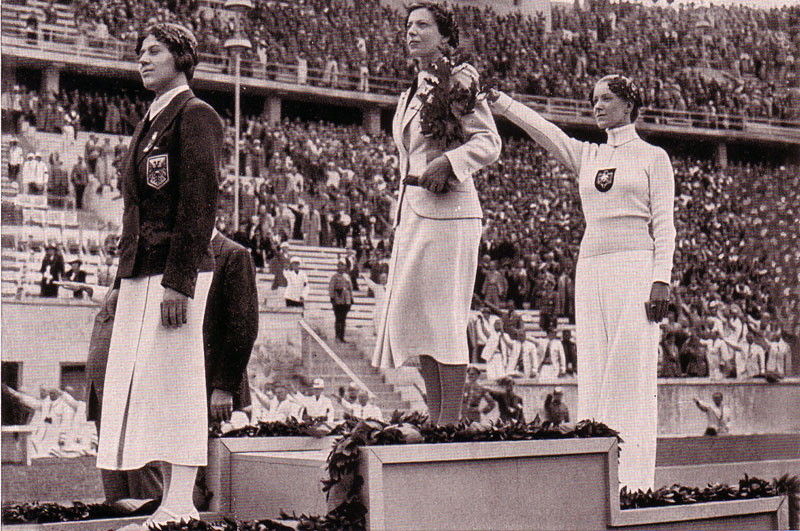
Politics versus Sport and Helene Mayer: The Forgotten Olympian
Sport and politics have always been uneasy bedfellows. The 2018 Winter Olympics, for example, appears to be witnessing a thaw in relations between North and South Korea, but to some (or many) it is merely a divisive PR exercise by the North designed to encourage sympathy and the chance of sanctions against it being dropped. What can certainly be said is that history tells us that governments of all shades have few qualms about exploiting sport and world class athletes for their own political ends. All this said, however, it is not the case that the athletes are always without blame. Some are ready to hold their noses and take any chance they are given to compete and succeed on the world stage. Which argument could be made for the German athlete Helene Mayer, you may read the following article to decide.
The Berlin Olympics of 1936, filmed by Leni Riefenstahl, is now remembered for the performance of the black sprinter Jesse Owens. Entirely forgotten, on the other hand, is that of one of the twentieth century’s most successful Olympians, the German fencing champion Helene Mayer.
Mayer was born on December 20th 1910 in Offenbach am Main, into an entirely assimilated secular Jewish family, and was educated together with her brothers in a Christian school. Her blonde hair, blue eyes and slim athletic build made her look entirely Germanic, in complete harmony with the Nazi ideal of the Aryan woman.
In 1924, aged 13, Mayer she won the German foils championship. Four years later in the summer Olympics in Amsterdam she won 18 bouts, losing only 2. At 17 she was Germany’s national heroine. She was featured on postage stamps and her picture appeared in sports magazines all over the country. But by the time the Los Angeles games were staged in 1930 misfortune had struck. Her father had died the previous year and she was told of the unexpected death of one of her brothers just two hours before her first bout of the tournament. She finished 5th.
Hitler came to power in 1933 and the Nazi officials wasted no time in clamping down on her Jewish heritage. Despite her outstanding natural ability as a fencer, her membership of the German fencing club was withdrawn, followed by revocation of her national citizenship in 1935. That year she left Germany for California with her hopes of competing for the country of her birth and her ambition to join the German diplomatic corps dashed.
But once again politics intervened. Hitler was desperate to stage the 1936 games in Berlin to showcase Germany’s recovery from the economic depression of the Weimar years and to publicise the power of the New Germany. Unfortunately for him the USA was beginning to voice strong distaste for the Nazi treatment of its Jewish citizens and the regime’s imprisonment of members of the German democratic opposition, threatening to boycott the games. With breathtaking cynicism, Hitler now agreed that Mayer be invited to return to Germany and represent the Nazi state in the women’s foil events. She accepted, finishing second in the women’s foil march, winning the silver medal. The newsreel photographs of the presentations on the podium show her ramrod straight and with her arm raised in a perfect Nazi salute (as seen pictured above). Her expression is hard to read – perhaps unhappiness and shame, maybe resolute determination, but certainly little joy. It may simply be that she is trying to convey to the spectators her continued loyalty to the country of her birth.
After the games Mayer swiftly returned to America and went on to become an American citizen. In 1952 she returned to Germany and married, settling in Heidelberg. Sadly she had little time to finally do so, dying of breast cancer in the October of that year aged just 42.
Many in the world of athletics view Helene Mayer as a tragic figure, used by both the Nazi party and the United States Olympic Committee to prevent the latter’s boycott of the 1936 games. Outside that world she is scarcely remembered at all.